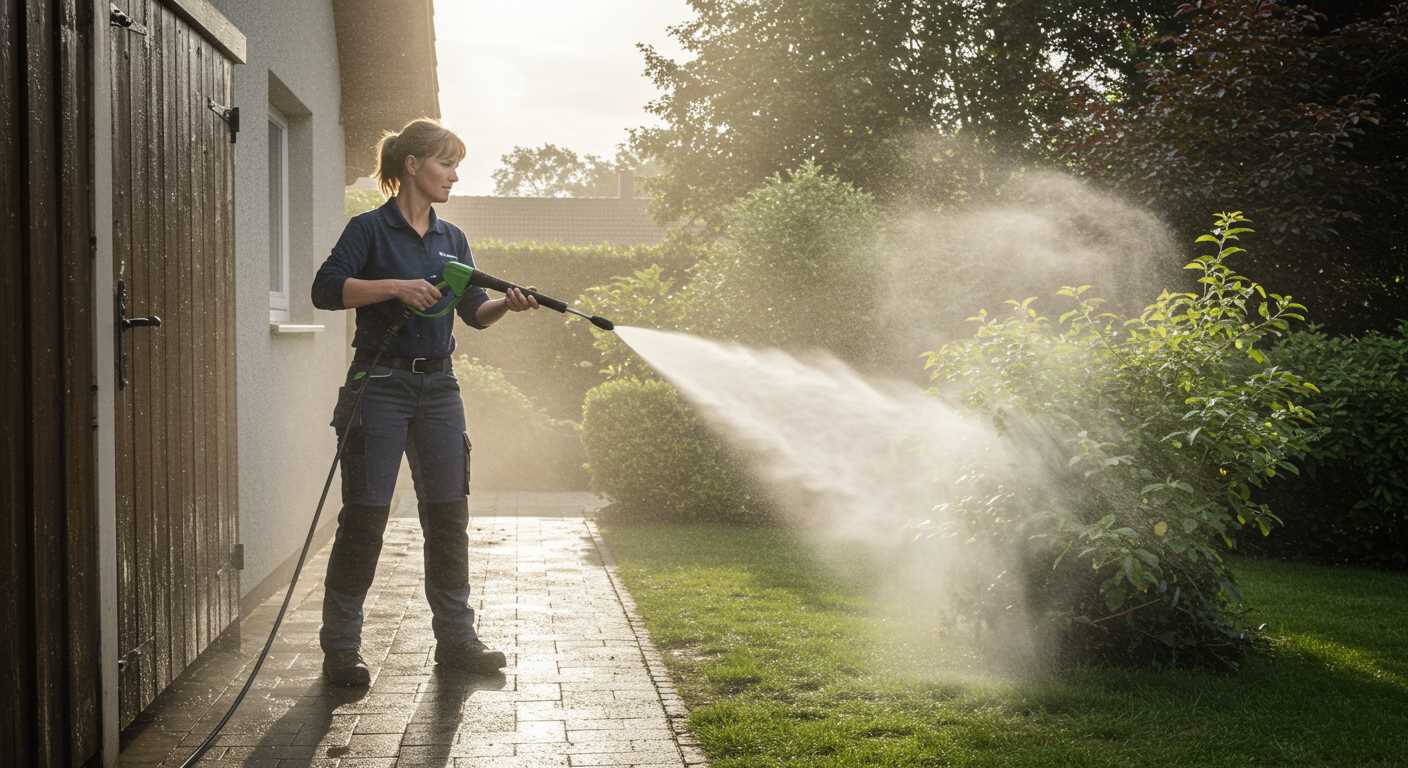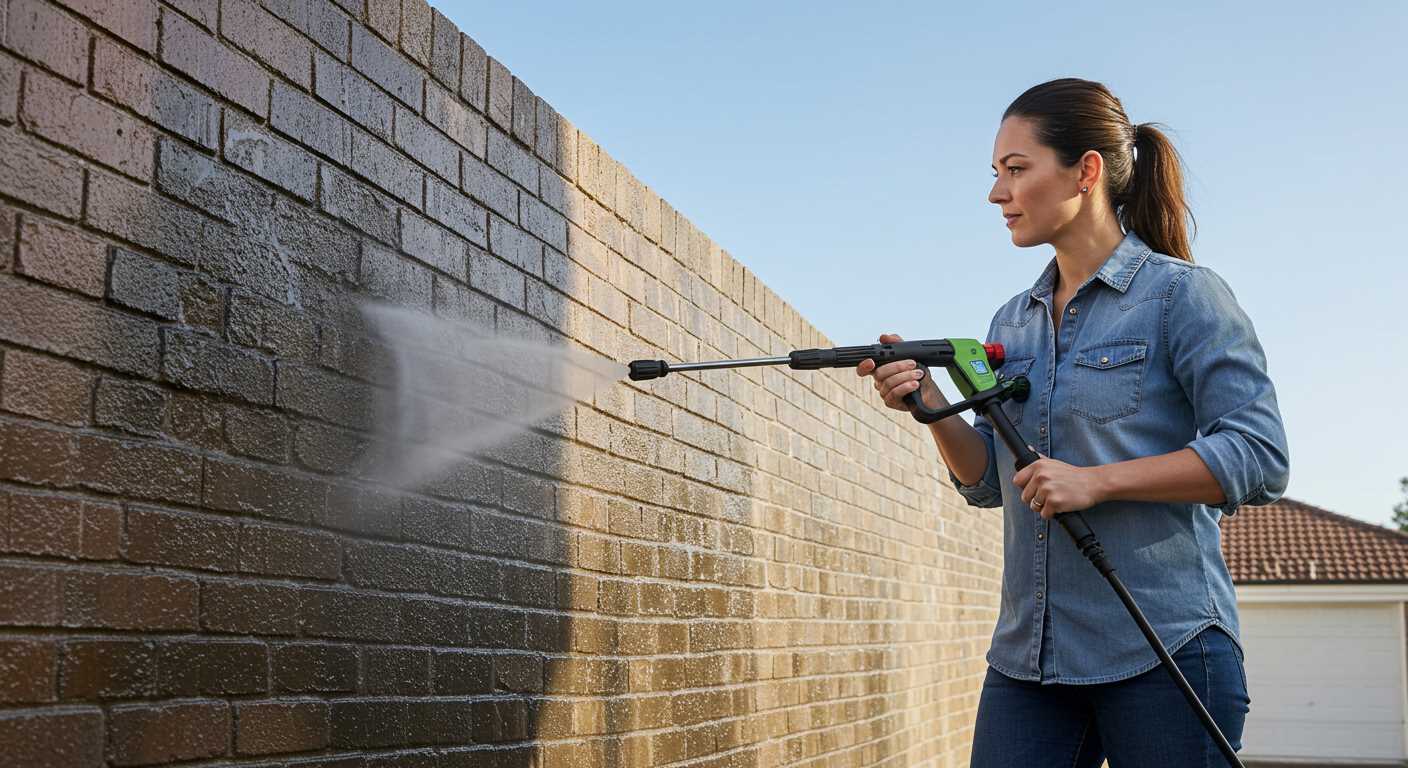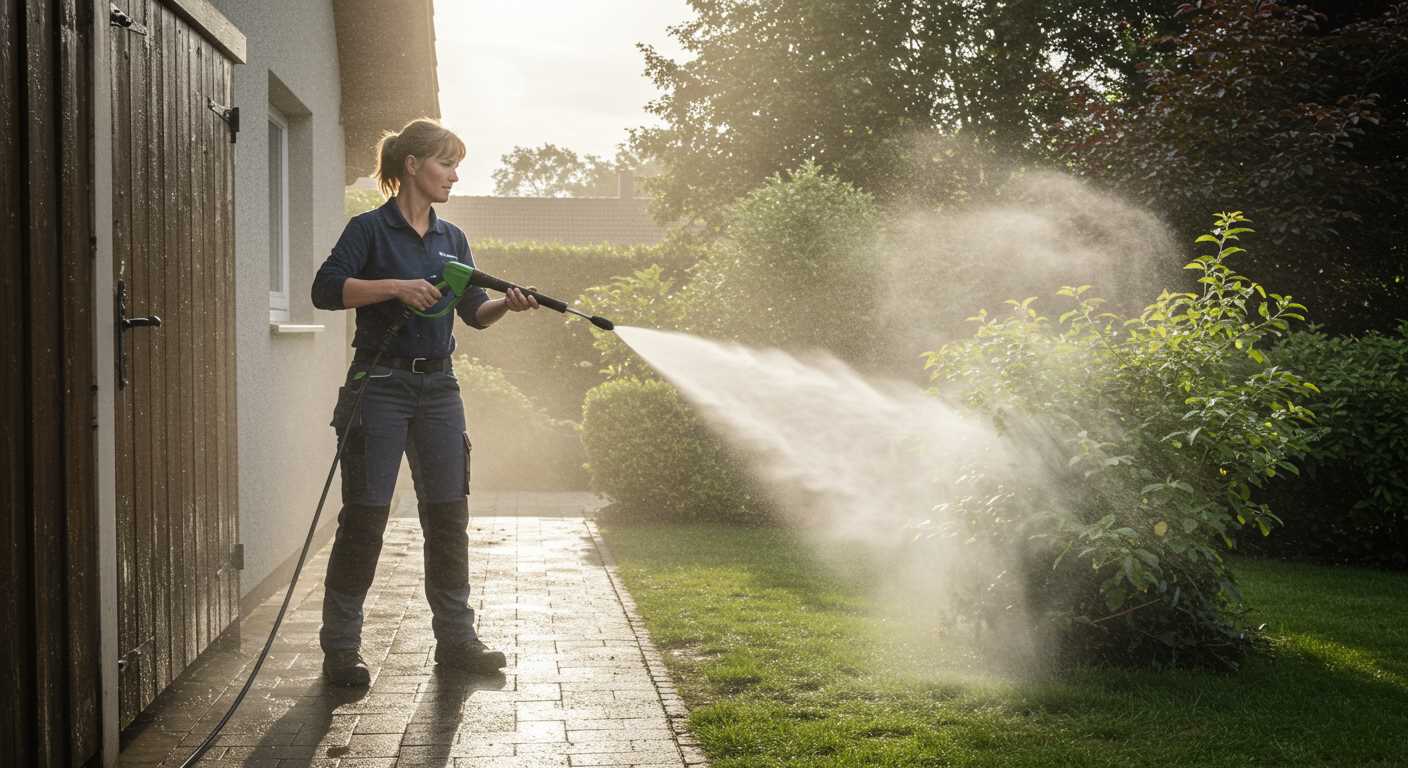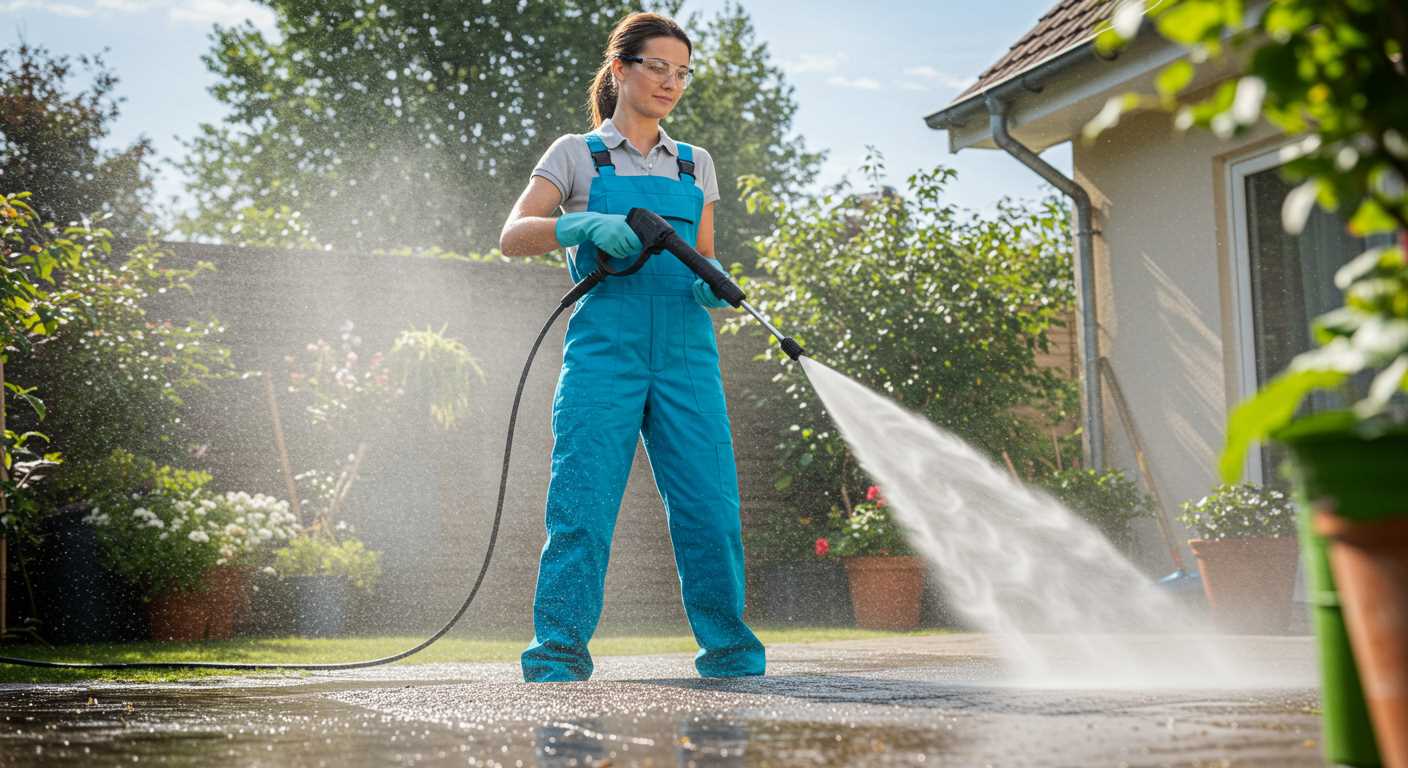


Begin by ensuring your machine is turned off and unplugged. Safety is paramount, and this simple step can prevent accidental activation. Locate the detergent tank, typically situated at the rear or side of the unit. This compartment is designed specifically for holding the cleaning agent.
Once you’ve found the tank, remove the cap or lid. It’s crucial to read the instructions on your chosen cleaning solution to confirm it is compatible with your unit. Pour the recommended amount of the solution into the tank, avoiding overfilling. A good rule of thumb is to fill it to the indicated line, if present.
After adding the cleaner, securely replace the cap to prevent any spills during operation. It’s wise to run a quick test on a small area to check the effectiveness of the mixture. In my experience, taking the time to prepare properly leads to significantly better results, making your cleaning tasks less of a chore and more efficient.
Understanding the Detergent System of Your Cleaning Device
The detergent system in your cleaning device is designed for optimal performance and convenience. Having worked with various models over the years, I’ve learned that understanding this system can significantly enhance your cleaning experience.
Components of the Detergent System

- Detergent Tank: Most units come equipped with a dedicated tank for cleaning solutions. This allows for easy mixing and application during operation.
- Injection System: This mechanism draws the cleaning solution from the tank and mixes it with water. It’s crucial for achieving the right concentration.
- Nozzle Compatibility: Different nozzles may affect the flow of the solution. Ensure you use the correct one for the best results.
Best Practices for Using the System
- Always use a detergent specifically formulated for your equipment. Generic products can damage internal components.
- Check the concentration level before use. Too much can lead to excess foam and reduced efficiency.
- Rinse the system after use. This prevents residue build-up and maintains functionality for future tasks.
By understanding these components and best practices, you can maximise the effectiveness of your cleaning tasks. Over my years in the field, I’ve seen how even small adjustments can lead to remarkable improvements in cleaning performance. Make sure to take time to familiarise yourself with your equipment’s system for the best results every time.
Choosing the Right Cleaning Solution for Your Task
Selecting the appropriate cleaning solution can significantly enhance the results of your equipment. Here are key factors to consider:
- Surface Type: Different surfaces require specific formulas. For instance, a gentle solution works well on painted surfaces, while a stronger one is better for concrete or brick.
- Cleaning Task: Identify the nature of the dirt or stains. For oil and grease, use a degreaser; for mildew, opt for a mould remover.
- Environmental Impact: Choose biodegradable options if you’re working near plants or water sources. Many brands offer eco-friendly choices that are effective yet gentle on nature.
- Concentration: Pay attention to dilution ratios. Some products are concentrated and require mixing, while others are ready to use. Always follow the manufacturer’s guidelines.
- Compatibility: Ensure the solution is suitable for your equipment. Some formulas may not be compatible and can damage the internal system.
For specific tasks like cleaning an aquarium, refer to guides like how to clean an empty fish tank for tailored recommendations on products that won’t harm aquatic life.
In my experience, versatility is key. I often keep a selection of solutions on hand to address various projects. A retractable pressure washer hose reel also makes switching between tasks more efficient, allowing quick adjustments when necessary.
Ultimately, understanding the specific requirements of your project will lead to optimal results, saving time and effort in the long run.
Preparing the Equipment for Detergent Application
Ensure the unit is switched off and unplugged. This step is essential for safety before handling any cleaning solutions. Next, inspect the detergent tank for any residue from previous use. A quick rinse with water can remove old remnants, preventing unwanted mixing of chemicals.
Check the suction tube for any blockages. Clear it to guarantee a smooth flow of liquid during operation. Additionally, assess the detergent filter; it should be clean to avoid clogging and ensure optimal performance. A dirty filter can severely impact the efficiency of the cleaning process.
Verify that you have the correct attachment for the detergent application. Some models come with a specific nozzle designed for applying cleaning agents. If your device has interchangeable nozzles, choose the one labelled for detergents to achieve the best results.
Before proceeding, gather the necessary cleaning solution. Make sure to read the label for mixing instructions and dilution ratios, if applicable. Using the wrong concentration can lead to ineffective cleaning or damage to surfaces.
Finally, position your equipment appropriately. Ensure that the detergent tank is easily accessible and that you have enough space to work comfortably. This preparation will streamline the process and enhance the effectiveness of your cleaning task.
Filling the Detergent Tank Correctly
Always ensure the machine is powered off and disconnected before starting. I remember a time when I was in a rush and neglected this step–what a mess that created! After confirming safety, locate the detergent reservoir, usually marked clearly on the unit. For optimal results, check the tank’s capacity; overfilling can lead to leaks and operational issues.
Use a funnel to avoid spills while pouring the cleaner. I found that a simple kitchen funnel works perfectly–no need for fancy tools. Pour slowly to prevent foam build-up, which can lead to overflow. Once filled, securely close the tank lid to prevent contamination and spills during use. Remember, a clean surface is key to achieving the best cleaning results.
After securing the tank, take a moment to inspect the nozzle settings. Different nozzles can affect how the solution is applied, so ensure you select the appropriate one for your task. I always keep a few extra nozzles handy, as switching between them can make a noticeable difference in cleaning efficiency.
Finally, perform a quick test spray away from any surfaces to ensure the mixture is dispensing correctly. This simple step can save you from potential mishaps and ensure you achieve the desired outcome when tackling your cleaning job. Trust me, a little preparation goes a long way in making the process smoother and the results more satisfying.
Adjusting the Detergent Settings on Your Pressure Cleaner
For optimal results, ensure you set the detergent flow correctly. Most models feature a dedicated dial or lever to control the mixture ratio. I recall a time when I used too much cleaner, resulting in excessive foam and a slippery surface. Adjust settings to the manufacturer’s recommendations, usually between 5% to 10% concentration for regular tasks.
Before you begin, it’s crucial to identify the type of nozzle in use. For instance, a fan nozzle works differently compared to a turbo or rotary nozzle. Use a low-pressure nozzle when applying the solution, as high pressure can lead to ineffective application and wastage. I had a client who struggled with stubborn grime, and switching to a low-pressure option made a world of difference.
Experimenting with settings is also beneficial. Start with a lower setting, observe the results, and gradually increase if needed. I often advise people to test the mixture on a small area first. This avoids overapplication and ensures the surface reacts well to the cleaner.
| Nozzle Type | Recommended Detergent Setting | Best Practices |
|---|---|---|
| Fan Nozzle | 5% – 10% | Apply evenly, maintain a distance of 30 cm from the surface. |
| Turbo Nozzle | 5% | Use in short bursts to avoid stripping paint or finish. |
| Rotary Nozzle | 5% – 8% | Ideal for tough stains; keep moving to prevent damage. |
After adjusting the settings, run a quick test on a small section. If the solution is too weak or strong, make incremental changes. Feedback from the surface will guide you to the ideal mix for your specific cleaning task.
Lastly, always rinse surfaces thoroughly after treatment. Leaving any residue can attract dirt, negating the cleaning effort. I’ve seen too many instances where users neglected this step, leading to frustration and additional work later on.
Cleaning and maintaining the detergent system after use
Immediately after completing your cleaning tasks, flush the detergent system. This prevents residue build-up that can clog components. Disconnect the suction hose from the container or tank, and run the machine on a water-only cycle for a few minutes. This helps clear out any leftover cleaning solution.
After flushing, inspect the filter screen at the end of the suction hose. Remove any debris or soap deposits, as these can restrict flow and affect performance. A clean filter ensures optimal operation during future use.
Consider rinsing the tank itself with clean water. If you notice any lingering detergent, fill the tank halfway with water, shake gently, and then pour it out. This simple step helps maintain the integrity of the tank and prevents cross-contamination of different cleaning agents.
Store the unit in a dry environment to avoid moisture build-up, which can lead to mould or odours. Ensure that the hoses and connections are free from detergent before coiling them for storage. This reduces the risk of damage and prolongs the life of the equipment.
Lastly, regularly check the detergent mixing valve for any blockages or signs of wear. A quick visual inspection after each use can save you from potential issues down the line. Keeping everything clean and in good condition will enhance your machine’s longevity and performance.




.jpg)


